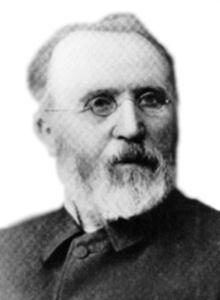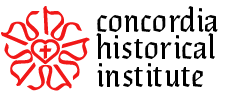Heinrich Christian Schwan
Third President of the Missouri Synod: 1878-1899

Born: 5 April 1819, Horneburg, Hanover, Germany
Died: 29 May 1905, Cleveland, Ohio
Heinrich Schwan attended both the University of Goettingen and the University of Jena before graduating in 1842. He was ordained in Germany on 13 September 1843. In 1893 he was given an honorary Doctor of Divinity degree by Luther Seminary from the Norwegian Lutheran Church.
In late 1843 Schwan began work as a missionary in Bahia, Brazil. While in Brazil, he married Emma Matilda Edmunde Blume (24 March 1828-16 July 1915) on 4 April 1849.
In 1850 he took a call to Salem Lutheran Church, Black Jack, Missouri, where he was installed on 15 September. In 1852 he was called to Zion Lutheran Church, Cleveland, Ohio. He remained as pastor at Zion for thirty years, when he stepped down and became the assistant pastor.
Schwan also served the Synod in numerous positions: vice-president of the Central District (1854-1857); member of the Board of Control of the Synod’s Fort Wayne college (1854-1857, 1860-1878); secretary of the Lutheran Free Conference (1856-1857, 1859); vice-president of the LCMS (1857-1860); president of the Central District (1860-1878); member of the Board of Examiners of the Fort Wayne college (1860-1878); representative to the Buffalo Colloquy (1866); vice-president of the Synodical Conference (1875); president of the LCMS (1878-1899).
In 1862 he published 32 Theses against Unevangelical Practice. He also supervised the publication of the Synodical Catechism in 1896.
Schwan is buried in Lake View Cemetery, Cleveland, OH, along with his wife, Emma Matilda Edmunde Blume Schwan.
For more information on Heinrich Schwan, see:
• Everette Meier. “The Life and Work of Henry C. Schwan as Pastor and Missionary,” Concordia Historical Institute Quarterly 24 (October 1951):132-39; 24 (January 1952):145-72; 25 (July 1952):72-85; 25 (October 1952):97-121.
Back to the Presidents Page
Copyright © 1997-2016 Concordia Historical Institute


